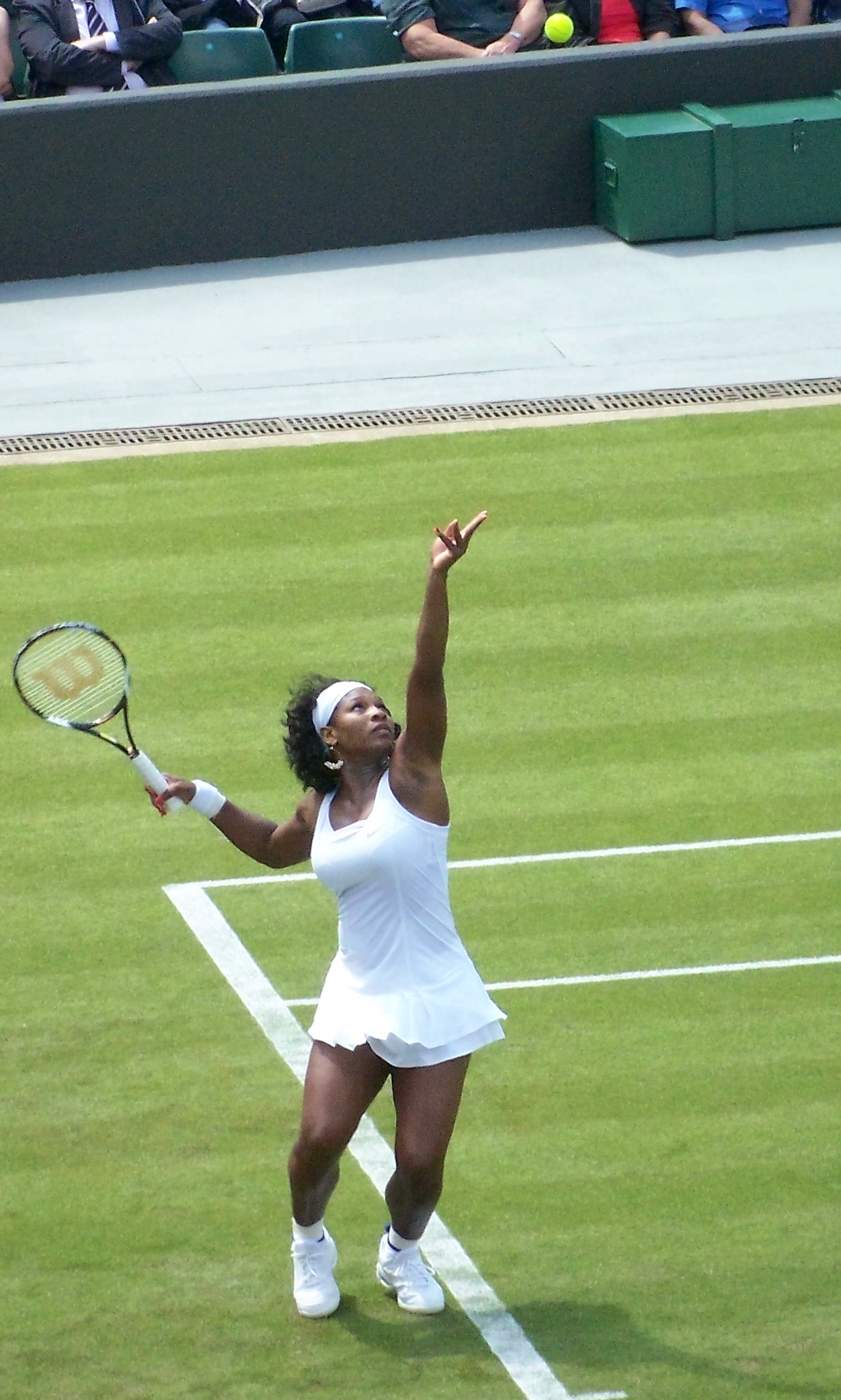|
1956 U.S. National Championships (tennis)
The 1956 U.S. National Championships (now known as the US Open) was a tennis tournament that took place on the outdoor grass courts at the West Side Tennis Club, Forest Hills in New York City, United States. The tournament ran from 31 August until 9 September. It was the 76th staging of the U.S. National Championships, and the fourth Grand Slam tennis event of the year. Finals Men's singles Ken Rosewall (AUS) defeated Lew Hoad (AUS) 4–6, 6–2, 6–3, 6–3 Women's singles Shirley Fry (USA) defeated Althea Gibson (USA) 6–3, 6–4 Men's doubles Lew Hoad (AUS) / Ken Rosewall (AUS) defeated Ham Richardson (USA) / Vic Seixas (USA) 6–2, 6–2, 3–6, 6–4 Women's doubles Louise Brough (USA) / Margaret Osborne (USA) defeated Shirley Fry (USA) / Betty Pratt (USA) 6–3, 6–0 Mixed doubles Margaret Osborne (USA) / Ken Rosewall (AUS) defeated Darlene Hard (USA) / Lew Hoad Lewis Alan Hoad (23 November 1934 – 3 July 1994) was an Australian ten ... [...More Info...] [...Related Items...] OR: [Wikipedia] [Google] [Baidu] |
Grand Slam (tennis)
The Grand Slam in tennis is the achievement of winning all four major championships in one discipline in a calendar year, also referred to as the "Calendar-year Grand Slam" or "Calendar Slam". In doubles, a team may accomplish the Grand Slam playing together or a player may achieve it with different partners. Winning all four major championships consecutively but not within the same calendar year is referred to as a "non-calendar-year Grand Slam", while winning the four majors at any point during the course of a career is known as a "Career Grand Slam". The Grand Slam tournaments, also referred to as majors, are the world's four most important annual professional tennis tournaments. They offer the most ranking points, prize money, public and media attention, the greatest strength and size of field, and the longest matches for men (best of five sets, best of three for the women). The tournaments are overseen by the International Tennis Federation (ITF), rather than the separate ... [...More Info...] [...Related Items...] OR: [Wikipedia] [Google] [Baidu] |
Grass Court
A grass court is one of the four different types of tennis court on which the sport of tennis, originally known as "lawn tennis", is played. Grass courts are made of grasses in different compositions depending on the tournament. Although grass courts are more traditional than other types of tennis courts, maintenance costs of grass courts are higher than those of hard courts and clay courts. Grass courts (in the absence of suitable covers) must be left for the day if rain appears, as the grass becomes very slippery when wet and will not dry for many hours. This is a disadvantage on outdoor courts compared to using hard and clay surfaces, where play can resume in 30 to 120 minutes after the end of rain. Grass courts are most common in the United Kingdom and Australia, although the Northeastern United States also has some private grass courts. Play style Because grass courts tend to be slippery, the ball often skids and bounces low while retaining most of its speed, rarely rising ... [...More Info...] [...Related Items...] OR: [Wikipedia] [Google] [Baidu] |
September 1956 Sports Events In The United States
September is the ninth month of the year in both the Julian and Gregorian calendars, the third of four months to have a length of 30 days, and the fourth of five months to have a length of fewer than 31 days. September in the Northern Hemisphere and March in the Southern Hemisphere are seasonally equivalent. In the Northern hemisphere, the beginning of the meteorological autumn is on 1 September. In the Southern hemisphere, the beginning of the meteorological spring is on 1 September. September marks the beginning of the ecclesiastical year in the Eastern Orthodox Church. It is the start of the academic year in many countries of the northern hemisphere, in which children go back to school after the summer break, sometimes on the first day of the month. September (from Latin ''septem'', "seven") was originally the seventh of ten months in the oldest known Roman calendar, the calendar of Romulus , with March (Latin ''Martius'') the first month of the year until p ... [...More Info...] [...Related Items...] OR: [Wikipedia] [Google] [Baidu] |
August 1956 Sports Events In The United States
August is the eighth month of the year in the Julian and Gregorian calendars, and the fifth of seven months to have a length of 31 days. Its zodiac sign is Leo and was originally named '' Sextilis'' in Latin because it was the 6th month in the original ten-month Roman calendar under Romulus in 753 BC, with March being the first month of the year. About 700 BC, it became the eighth month when January and February were added to the year before March by King Numa Pompilius, who also gave it 29 days. Julius Caesar added two days when he created the Julian calendar in 46 BC (708 AUC), giving it its modern length of 31 days. In 8 BC, it was renamed in honor of Emperor Augustus. According to a Senatus consultum quoted by Macrobius, he chose this month because it was the time of several of his great triumphs, including the conquest of Egypt. Commonly repeated lore has it that August has 31 days because Augustus wanted his month to match the length of Julius Caesar's July, but t ... [...More Info...] [...Related Items...] OR: [Wikipedia] [Google] [Baidu] |
.jpg)


